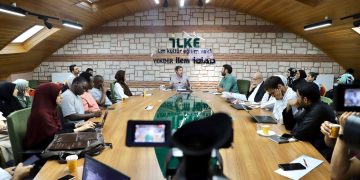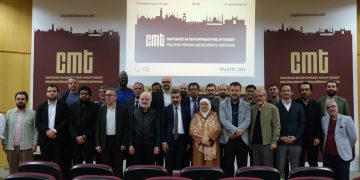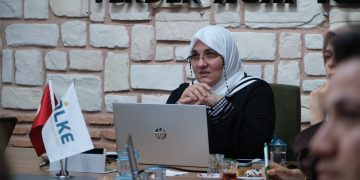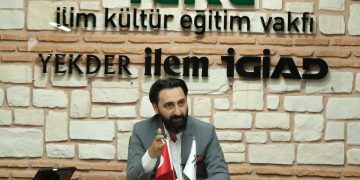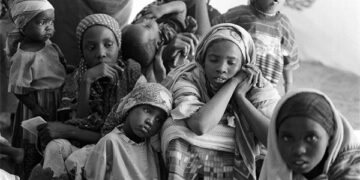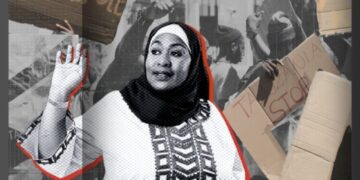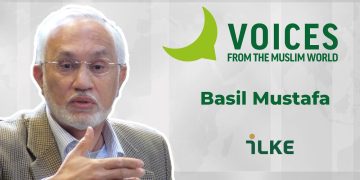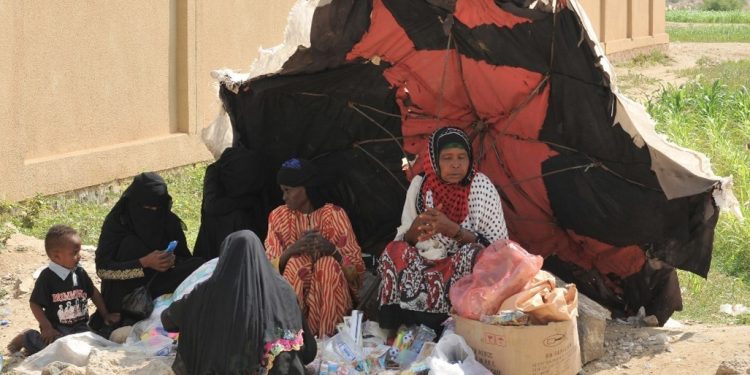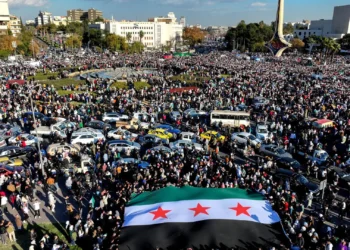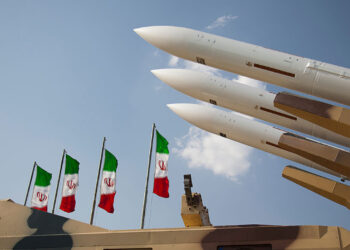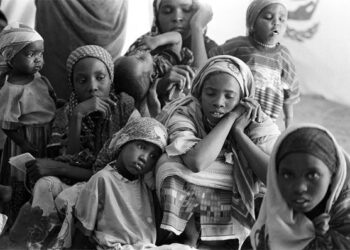A humanitarian crisis is considered an event or events that threatens the health, safety, or well-being of a large group of people. Same as every year in the last whole decade, Yemen has topped the list of the world’s worst humanitarian crises this year as well. When the resources of the region are not sufficient for development, the only solution is global human interventions. Founded in Yemen in 2014, the Sana’a Center for Strategic Studies is an independent think tank that aims to change the region through information production. In this article, a qualified analysis of the humanitarian report of the Sana’a Center for Strategic Studies will be carried out and an assessment of the challenges and obstacles encountered will be made. Problems such as data security and robustness will be discussed, and the political backgrounds of these issues will be discussed. New solutions and initiatives for the humanitarian crisis in the region will also be mentioned.
The Yemen humanitarian crisis, which gained momentum in 2021, is a bad fruit of local, regional, and international struggles, a legacy of events that go back a long time. In recent years, the armed Houthi movement controls about 75 percent of northern and central Yemen, including the main settlements, although the front lines have become largely static (Vuylsteke, 2021). While a military victory is already difficult to achieve, there is no hope for a political solution. According to the Sana’a Center for Strategic Studies report (2021), peace talks have so far failed and fighting has recently escalated in Marib province. The Stockholm Agreement, backed by the UN and signed by the warring parties in December 2018, has also not been implemented to a large extent (Vuylsteke, 2021). Therefore, while stopping the war is not the primary and most effective solution for the civilian population who are the victims of this crisis, new developments are strongly needed.
The first humanitarian intervention in Yemen came after hundreds of thousands of people were displaced by fighting between Yemen’s army and Houthi forces in Sa’ada province between 2004 and 2010. (Vuylsteke, 2021). The popular uprising in Yemen in 2011, followed by the conflict in Sana’a and other northern provinces, and the resurgence of al-Qaeda in the Arabian Peninsula, led to the displacement of the local population and required further humanitarian intervention (Vuylsteke, 2021). Even before the current war, Yemen ranked 154th out of 187 countries in the United Nations Development Programme (UNDP) Human Development Index, making it the poorest country in the Middle East (United Nations Development Programme, 2011). Unfortunately, continuous conflict, political impotence, corruption, weak state institutions, limited educational opportunities, and political actors are resisting development (Vuylsteke, 2021).
The world has not been silent on Yemen crisis and has attempted various interventions. These days, there is widespread discussion about ongoing humanitarian aid in Yemen. In this context, it is also known that UN personnel take an active role in the region. Initially, the humanitarian intervention focused on early recovery to ensure everything from emergency needs to long-term development (Vuylsteke, 2021). But the growing crisis, and the rapidly deteriorating political and safe environment, led to the evacuation of the personnel from humanitarian staff and most of the diplomatic community from Yemen (Vuylsteke, 2021). Thus, aid personnel left the area, and embassies were moved to safe zones or even other countries – some to Riyadh (Saudi Arabia) – (Klaauw, 2019). Six weeks after the evacuation of international humanitarian organizations from Yemen in 2015, a limited number of personnel returned to Sana’a (Vuylsteke, 2021). At this time, no action was allowed outside the city. In addition, unfortunately, there are very few help networks and staff outside Sana’a. Given the current security situation, such as heavy fighting, airstrikes, and risky roads, it has become impossible to carry out a qualified needs assessment (Vuylsteke, 2021).
Overview of the Humanitarian Aid Issue
The main basis behind “humanitarian assistance” is to address the needs of civilians caught in conflict and natural disasters at the time and place of human need; to ensure the protection of civilians in conflicts and to address the consequences of displacement (Vuylsteke, 2021). Although this is an accepted definition, there is no single definition for human intervention. The lack of common definition opens the door to interpretation while at the same time arousing doubt in the context of the principle of impartiality. In addition, there are growing doubts about the availability of robust and reliable data given the current situation of the aid personnel who will make their observations and assessments. According to a UN official in 2015, they do not know about what is happening in the main centers of the conflict and the surrounding areas, as none of his friends, including himself, have been able to leave the city center (Vuylsteke, 2021). No data has been created that can be relied on as to whether the assistance continues or who it reaches. Therefore, the 2015-2016 needs assessment, which will form the basis of other data sets, is based on a report that is not systematic and does not include methodological analysis (Vuylsteke, 2021). Despite a joint effort to improve the quality of data with the introduction of multi-cluster location
assessment (MCLA) in most regions of Yemen in 2018, there was a 60 percent reduction in these assessments in 2019 (Vuylsteke, 2021). One of the key nationwide assessment surveys, the MCLA (Multi-Cluster Location Assessment), was not completed in 2019 due to obstacles put in place by Houthi officials. Most of the 2020 and 2021 data is based on the 2018 MCLA survey. Therefore, the usefulness and applicability of the 2020 and 2021 data are also in doubt. At the same time, this explains the phrase “no data” that is constantly encountered in data sets. Why Is The Data Reliability Important?
Actors outside the region shape this plan based on certain data when making an action plan. Therefore, they need reliable data that has observed and evaluated the situation in the region. Since this data is the only information they can access about the region, the reliability and quality of the data are very important for intervention plans. For example, the 2019 IO (International Humanitarian Partnership) year-end report, stated that 13.7 million people were reached during the year (Vuylsteke, 2021). This number was created using, according to some key information, the highest monthly total of people receiving food distribution, the most commonly distributed service (Vuylsteke, 2021). The year-end report stated that 13.3 million people received emergency food aid in 2019 and that inter-cluster access was taken into account when determining access to a total of 13.7 million people (Vuylsteke, 2021). It is not clear how the 400,000 people here who did not receive food aid but received other assistance were identified. In addition, World Food Programme (WFP) data in the same year contradicted this number and stated that the highest number of people reached with food aid in a month was 12.73 million in November 2019 (World Food Programme, 2019). Moreover, since the end of 2018, it has been reported that food aid has been widely diverted both inside and outside. Subsequently, the insecurity of the data resulted in the suspension of food distribution in Sana’a in June 2019 (Vuylsteke, 2021). Considering the political situation in the region, it is not surprising that this suspicious data exists. Because the Houthis are active in the region, some of the ministries they lead according to the report (2020 the Ministry of National Education, the directed documents, and the fact that aid cannot be tracked after arriving in the region, it seems quite illogical to believe that all, or even most of the aid, has reached the targeted areas. There is no reliable data to verify that this assistance has been delivered correctly.
In Yemen, most of the data is collected by the authorities both in areas controlled by the armed Houthi movement and in areas controlled by the internationally-backed Yemeni government (Vuylsteke, 2021). These authorities have control over all needs assessments and data collection. However, the verification process of the evaluations and prepared lists is often overshadowed by interventions, and errors are ignored. The report (2021) states that even when program personnel in humanitarian organizations conduct needs assessments, they are often accompanied by authorities in the region. Therefore, this has made independent data collection extremely difficult. It has been established that most Houthi forces do not allow data to be taken out of the country and impose restrictions on how much information is shared. Inaccurate data, which is not known how it is collected, by whom, and with what limitations, reduces the momentum of assistance because it cannot provide transparency for intervention.
Is Humanitarian Aid a Solution?
Humanitarian aid covers emergency aid, which is more lifesaving. But in the long run, it doesn’t solve problems. Humanitarian intervention is required in Yemen in terms of many difficult conditions such as displacement, floods, droughts, and food security. Most of them are met with emergency responses. Unfortunately, even before the current war, it is important to take longer-term measures and take action in Yemen, which ranked 154th out of 187 countries on the United Nations Development Programme’s Human Development Index (UNDP, 2011). This long-term change requires more structured, effective, and sustainable interventions. However, many factors, especially the armed Houthi movement, are serious obstacles to these interventions. Restrictive and supervisory interventions of the Houthi movement reduce the transparency and reliability of the data environment. Thus, healthy and open communication between the region and aid organizations is not established. This flawed data situation narrows the field of aid or investments and closes the way they develop. In light of all this, the conclusion is that the current situation in Yemen and many of the problems that need to be solved are political. Therefore, humanitarian aid does not promise certainty that this crisis will be resolved and that the next generation will be saved.
What are the existing solutions?
According to the Egyptian-based Al-Ahram Center for Political and Strategic Studies (ACPSS, 2022), which has active work for the region, it seems possible to create a solution with the Second Gulf Initiative in Yemen. The first gulf initiative, launched in April 2011, followed a joint process with the President of Yemen and achieved a calmer political environment for Yemen (Aliba, 2022). Unfortunately, the newly developed problems were not solved by the Yemeni government. The political vacuum created by the departure of the elected president led to the spread of the Houthi movement and its takeover (Aliba, 2022). It is important to be reminded of the information about the past in the first place, because 10 years later there is not much change in Yemen. This has led the countries in the region, and especially Egypt, which plays an active role in the region, to unite to solve this crisis in Yemen. The Gulf Cooperation Council announced that they were planning a second Gulf Initiative and stated that the Houthi Movement refused to participate in this call (Aliba, 2022).
As a method, the Gulf initiative encourages the Houthis to review their positions. In parallel, the UN mission in Yemen is work-ing to support the initiative (Aliba, 2022). In recent weeks, the UN envoy to Yemen, Hans Grundberg, has held extensive talks with Yemeni political forces and parties to prepare for the initiative and presented a draft ceasefire (Aliba, 2022). International support for the Gulf Initiative here adds a very different dimension to the end of the war in Yemen. In fact, if an overview is made, it would not be wrong to say that there is an international tendency to end wars in the Middle East.
On this occasion, it can be considered that the success of a new Gulf initiative depends on having a formula that includes unifying Yemen’s ranks and not being limited to the political reform process. However, the Gulf Initiative aims to enable a development model in areas beyond the control of Houthi troops, as well as to improve the military system and build professional political institutions. These results, which will bring the balance of power in Yemen to another level, will eventually undermine the Houthi movement and put it in a real predicament.
This will also help the humanitarian crisis in Yemen. The way to present a solution is to identify the problem. The fact that the political ground is so complex and debilitating triggers and leaves the crisis unresolved in many areas, both social and economic. As mentioned above, even a non-political issue such as food insecurity remains unresolved due to political problems. Interventions are blocked because political factors cast doubt on the robustness of the data in Yemen. As a result, Yemen is in a decades-long crisis. In this article, information about the background of this process and the obstacles it encounters was shared, and a layered analysis was carried out. The fact that data collection takes place under very bad conditions undermines reliability. It is not surprising that many of these conditions are based on the political environment. The fact that the interventions are now taking into account the political context can move many stones in this region and lead to the development of Yemen. Therefore, the Gulf initiative offers great promise for the humanitarian crisis in Yemen.
References
هل تشكل املبادرة الخليجي الثانية مخرجاً من مأزق (2021). A. Aliba,
الحرب يف اليمن؟
Klaauw, J. van D. (2019, December 16). Yemen: Exotic and utterly war-torn : Diplomat Magazine. Diplomat Magazine. https:// diploma t online .c om/mag/2016/12/ yemen-exotic-and-utterly-war-torn/
Birleşmiş Milletler Kalkınma Programı (UNDP). (2011). Human Development Report 2011 Sustainability and Equity: A Better Future for All. https://hdr.undp.org/sites/default/files/ hdr_2011_en_summary.pdf
Birleşmiş Milletler İnsani Yardım Koordinasyon Ofisi (UN OCHA). (2019, December 1). Consolidated Appeals Process (CAP): Humanitarian
Response Plan 2010 for Yemen Yemen. ReliefWeb. https://reliefweb.int/report/yemen/ consolidated-appeals-process-cap-humanitarian-response-plan-2010-yemen
Vuylsteke, S. (2021, October 27). The Myth of Data in Yemen. Sana’a Center for Strategic Studies. https://sanaacenter.org/reports/ humanitarian-aid/15353
Vuylsteke, S. (2021, October 27). Challenging the Narratives: Is Yemen Really the Worst Humanitarian Crisis in the World? Sana’a Center for Strategic Studies. https://sanaacenter.org/reports/ humanitarian-aid/15352
World Food Programme. (2019, October 30). Emergency DashboardYemen | World Food Programme. Wfp.org. https://www.wfp.org/ publications/yemen

